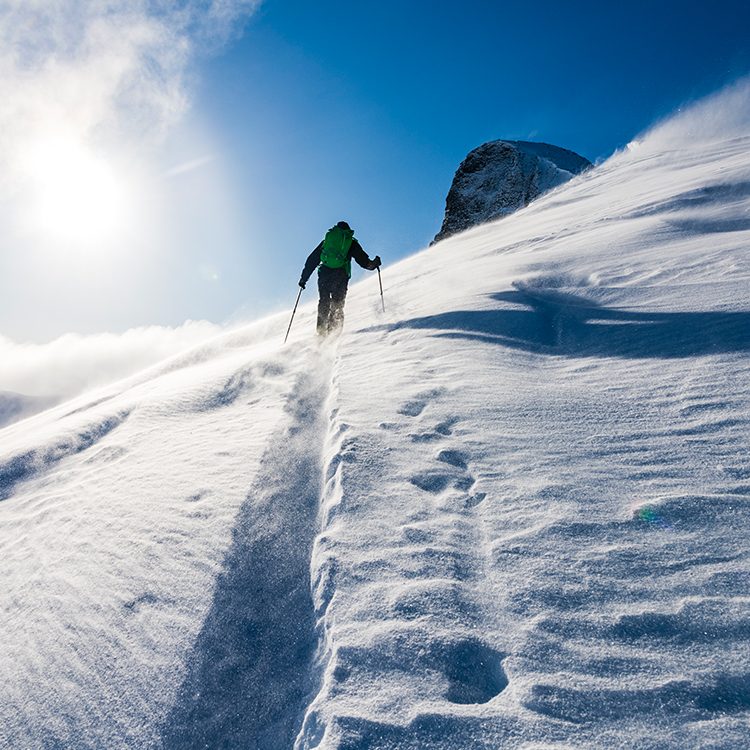Trail builders are an enigmatic bunch. Some build for the solitude of an empty forest, some to contribute to their communities, and others do it for notoriety. Each trail has a unique signature of these invisible creators — imparted by their distinct style, how they view terrain and their ambition for what the trail should be. But what about the act of building itself? Creating a trail is equal parts creativity, physical effort and problem-solving — and, in my opinion, the best form of mental therapy.
Humans are creative problem solvers by nature, and scouting the line of a trail is the perfect exercise. Both a passive and active activity, a natural give-and-take relationship works through complex terrain. The mountain always dictates where a trail will lead. Working within these boundaries, not forcing unnatural deviations, will help a trail flow seamlessly — creating a consistent character and balance through compromise. Gradually refining the line by elimination, visualization and unlocking subtle features of the hillside is as satisfying as solving any complex puzzle.
The concept of active meditation has gained traction in recent years. Known as a type of flow state, an equal balance of mental stimulation and muscle memory or proficiency is critical to success — just enough technical challenge to keep the mind engaged but not tricky enough to require complete mental focus. The rhythmic swings of a Pulaski into the dirt, raking rocks from golden soil, or slotting rock armouring into a life-size jigsaw puzzle brings one quickly into this meditative state. The goal isn’t to focus on a specific nothingness but watch the thoughts travelling in and out of focus — like a passive bystander simply observing. Despite the physical output, the mental release is energizing and lingers for hours after leaving the forest.
But it’s not all zen and mindfulness; there are also struggles — a lot of them. What lies beneath a thick cloak of moss is always a mystery, and often, it’s a frustrating tangle of off-angle roots or the tips of rocks concealed like icebergs that take whole days of awkward wrestling to remove or rotate. It mirrors life in the sense that almost nothing worth doing is easy. The emotional release of persevering over a stubbornly anchored stump provides a tangible victory — something not often gained when dealing with endless emails. Progress may be slow, but it is always satisfying.
Taking on a long-term trail-building project provides a rare opportunity to spend extended time in a specific patch of forest. It’s far different from riding a favourite trail, even if every bend and pitch is familiar. Builders can spend days within ten square metres working through difficult sections, developing a deep connection to a specific area. Knowing which trees creak and groan as the west wind strengthens around mid-day, how hard it needs to rain before the drops breach the canopy and moisten the soil and knowing that cracking sticks are generally squirrels and not bears inevitably create a unique understanding and bond between builder and forest — something that we, as modern humans, seldom experience.
The new buzzword for this is ‘forest bathing,’ but builders have known this simply as work. Beyond physical exercise, the myriad health benefits of spending time in nature are well-studied. The natural vibrational frequency of a forest resonates at 7.83 Hz – similar to low alpha and high theta brain waves, which correspond to mental relaxation and deep meditation. Trees constantly emit phytoncides — natural plant oils to protect against bacteria and insects that strengthen our immune systems. Digging in the dirt and getting soil beneath fingernails can further aid immune systems and lessen allergies. Even looking at the colour green stimulates feelings of abundance, relaxation, and rejuvenation. We’re hardwired to be in nature. It’s no wonder trail builders are fanatically drawn to the forest for apparent and imperceptible reasons.
Trails provide many functions and are much more than a simple way to get from A to B. They give cultural identity to their regions; allow us to enjoy our chosen sports like hiking, mountain biking and trail running, or getting to the crag; and facilitate access to great forests draped in moss and lichen or expansive alpine views. Trail building connects us to the forgotten primal nature of being human, but not without sacrifice. Every hour spent digging in the dirt is an hour not spent doing the thing we are building the trail for in the first place — to enjoy the sports we love. But there’s something addictive about the building. The stimulation of creative and mental functions we need as humans, the altruistic act of contributing to the local community, or returning to the simple childhood joys of playing in the forest. No matter what the reason, trails are the lifeblood of our communities, and we have trail builders to thank for that.






































